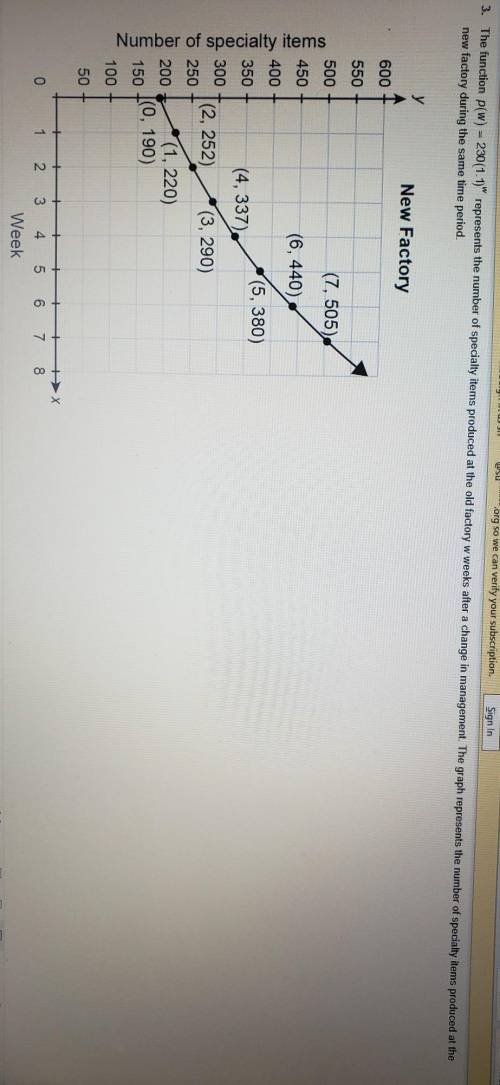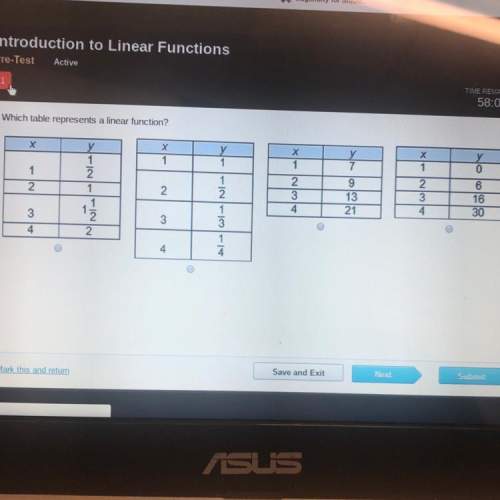
Mathematics, 03.12.2020 18:30 Thejollyhellhound20
The function p(w) = 230(1.1)^w represents the number of specialty items produced at the old factory w weeks after a change in management. The graph represents the number of specalty items produced at the new factory during the same time period. ( Answer A, B,C Explain and Show you work): A) During Week O, how many more specialty items were produced at tbe old factory than at the new factory? Explain. B) Find and compare the growth rates in the weekly number of specialty items produced at each factory. Show your work. C) When does the weekly number of specialty items produced at the new factory exceed the weekly number of specialty items produced at the old factory? Explain. [ Look at the picture for the graph]. Will Mark Brainliest.


Answers: 2


Other questions on the subject: Mathematics

Mathematics, 21.06.2019 19:00, Brendah4962
Solve the equation using the zero-product property. -3n(7n - 5) = 0 a. 0, -5/7 b. -1/3, -5/7 c. -1/3, 5/7 d. 0, 5/7
Answers: 2

Mathematics, 21.06.2019 21:30, allendraven89pds755
Which equation is true? i. 56 ÷ 4·7 = 82 ÷ (11 + 5) ii. (24 ÷ 8 + 2)3 = (42 + 9)2 neither i nor ii ii only i and ii i only
Answers: 1

Mathematics, 22.06.2019 00:30, mercydiaz84
Measure a and b and find their sum. how are the angles related?
Answers: 3
You know the right answer?
The function p(w) = 230(1.1)^w represents the number of specialty items produced at the old factory...
Questions in other subjects:




Physics, 19.10.2019 20:50




History, 19.10.2019 20:50





